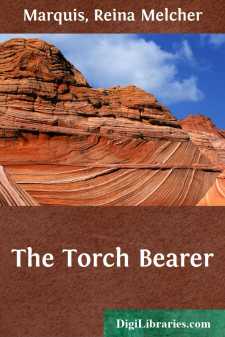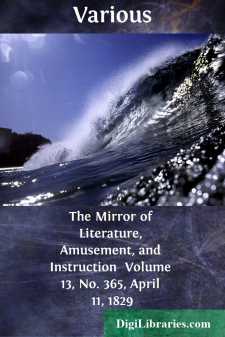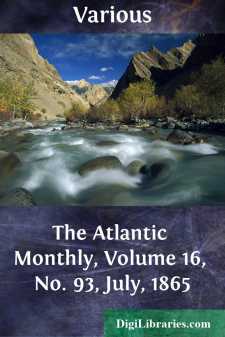Categories
- Antiques & Collectibles 13
- Architecture 36
- Art 48
- Bibles 22
- Biography & Autobiography 813
- Body, Mind & Spirit 142
- Business & Economics 28
- Children's Books 17
- Children's Fiction 14
- Computers 4
- Cooking 94
- Crafts & Hobbies 4
- Drama 346
- Education 46
- Family & Relationships 57
- Fiction 11829
- Games 19
- Gardening 17
- Health & Fitness 34
- History 1377
- House & Home 1
- Humor 147
- Juvenile Fiction 1873
- Juvenile Nonfiction 202
- Language Arts & Disciplines 88
- Law 16
- Literary Collections 686
- Literary Criticism 179
- Mathematics 13
- Medical 41
- Music 40
- Nature 179
- Non-Classifiable 1768
- Performing Arts 7
- Periodicals 1453
- Philosophy 64
- Photography 2
- Poetry 896
- Political Science 203
- Psychology 42
- Reference 154
- Religion 513
- Science 126
- Self-Help 84
- Social Science 81
- Sports & Recreation 34
- Study Aids 3
- Technology & Engineering 59
- Transportation 23
- Travel 463
- True Crime 29
Sort by:
CHAPTER I. THE HISTORY OF THE WELL. It has been remarked that the discovery of many of our medicinal springs has been due to some romantic incident, or, in other cases, to some occurrence partaking almost of the ludicrous. At the famed Carlsbad, for instance, a princely hunter pursues his stag into the lake where it has sought refuge, whereupon the unusual cries of his hounds, too eagerly breasting...
more...
CHAPTER I Peter Burnett stood on the top-most of the broad white steps leading to the "Shadyville Seminary for Young Ladies." He had just closed the door of that sacred institution behind him, and with a sigh of relief which was incompatible with the honors of his professorship. But Peter had never duly valued his position of instructor to Shadyville's feminine youth, though his reverence...
more...
by:
Lucien Wolf
I. INTRODUCTION. ON INTERNATIONAL RELIGIOUS LIBERTY GENERALLY. The Jewish Question is part of the general question of Religious Toleration. Together with the questions relating to the toleration of "Turks and Infidels," it raises the question of Religious Liberty in its most acute form. It is both local and international. Locally it seeks a solution through Civil and Political Emancipation on...
more...
by:
Various
The Engraving on the annexed page is, perhaps, one of the greatest antiquarian treasures it has for some time been our good fortune to introduce to the readers of the MIRROR. It represents the original SOMERSET HOUSE, which derived its name from Edward Seymour, Duke of Somerset, maternal uncle to Edward VI., and Protector of the realm during most of the reign of that youthful sovereign. The time at...
more...
by:
Owen Seaman
November 24, 1920. No sooner had the League of Nations met at Geneva than news came of the pending retirement of Mr. Charlie Chaplin. We never seem to be able to keep more than one Great Idea going at a time. "Have you read Mrs. Asquith's Book?" asks an evening paper advertisement. "What book?" may we ask. "In our generation," says Dean Inge, "there are no great...
more...
CHAPTER I THE HORSE THIEF It was a warm summer morning in the town of Farewell. Save a dozen horses tied to the hitching-rail in front of various saloons and the Blue Pigeon Store and Bill Lainey, the fat landlord of the hotel, who sat snoring in a reinforced telegraph chair on the sidewalk in the shade of his wooden awning, Main Street was a howling wilderness. Dust overlay everything. It had not...
more...
by:
Various
YOUNG MEN IN HISTORY. History is an imperfect record of nations and races, diverse in their position and capacities, but identical in nature and one in destiny. Viewed comprehensively, its individuals and events comprise the incidents of an uncompleted biography of man, a biography long, obscure, full of puzzling facts for thought to interpret, and more puzzling breaks for thought to bridge, but, on...
more...
by:
Henrik Ibsen
ACT 1 (SCENE—The sitting-room at Rosmersholm; a spacious room, comfortably furnished in old-fashioned style. In the foreground, against the right-hand wall, is a stove decorated with sprigs of fresh birch and wild flowers. Farther back, a door. In the back wall folding doors leading into the entrance hall. In the left-hand wall a window, in front of which is a stand filled with flowers and plants....
more...
CHAPTER ONE Gissing lived alone (except for his Japanese butler) in a little house in the country, in that woodland suburb region called the Canine Estates. He lived comfortably and thoughtfully, as bachelors often do. He came of a respectable family, who had always conducted themselves calmly and without too much argument. They had bequeathed him just enough income to live on cheerfully, without...
more...
In the course of the preparation of a synopsis of the North American terrestrial microtines by one of us (Cockrum), and the completion of a Master's thesis on the geographical variation of the red-backed mice of Wyoming by the other (Fitch) we had occasion to study the red-backed mice of the southern Rocky Mountain region (see figure 1). Results of these studies are the recognition of two...
more...











